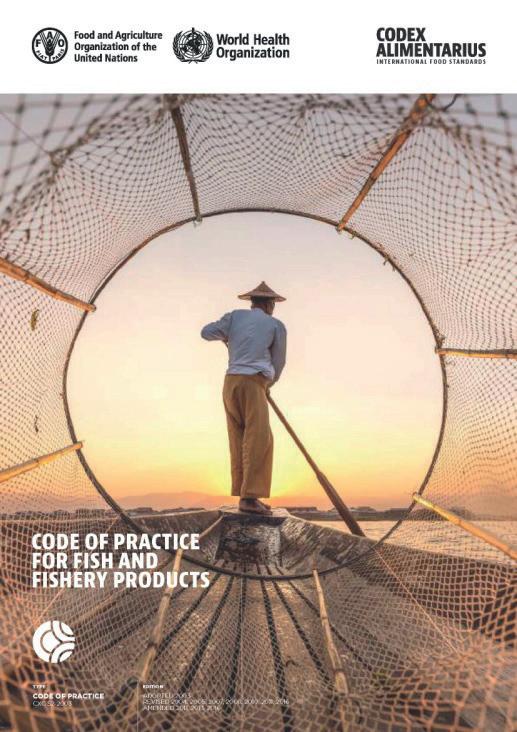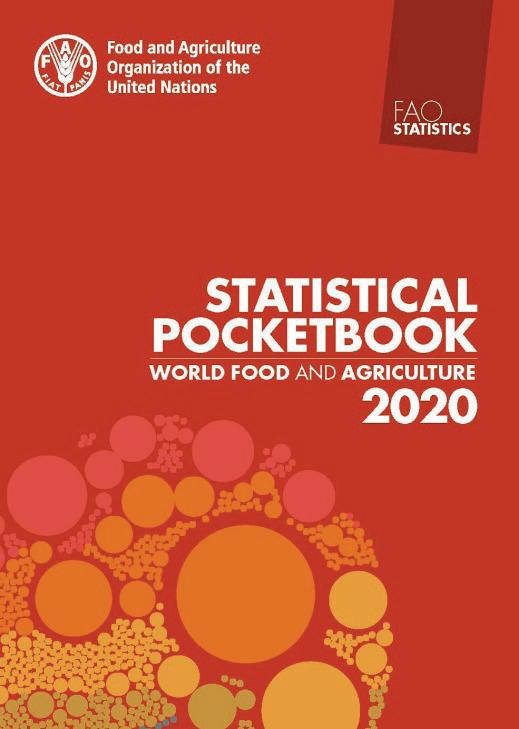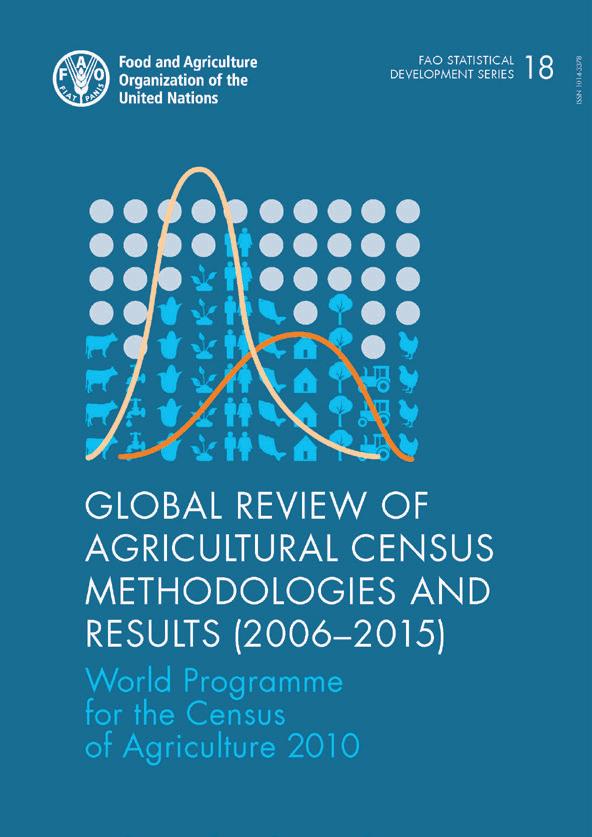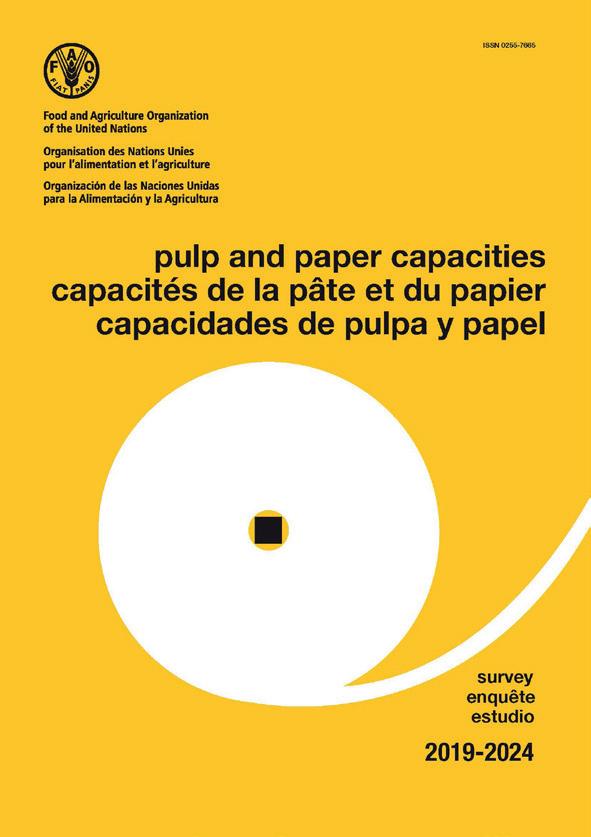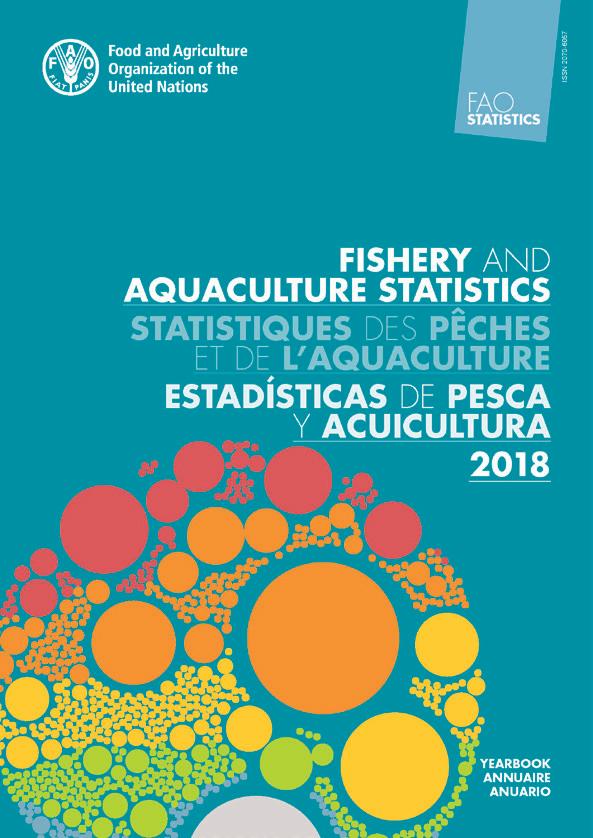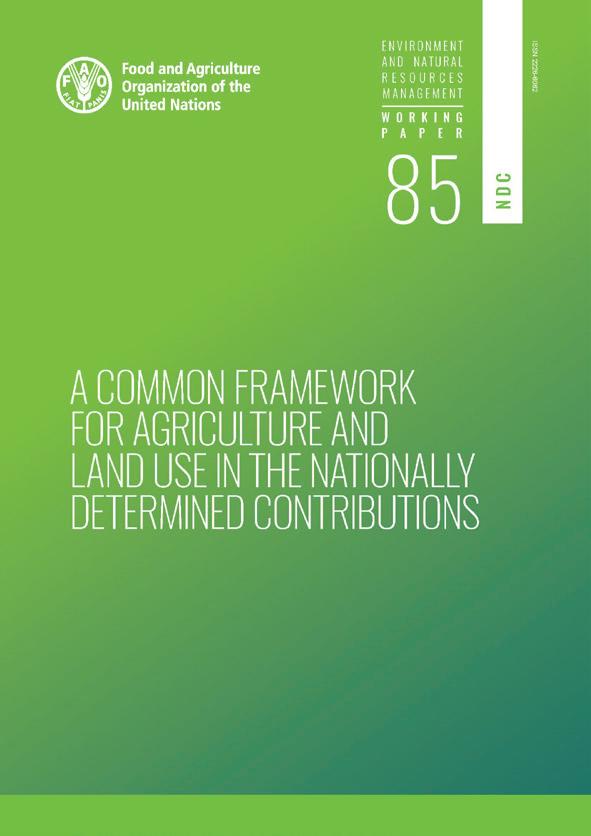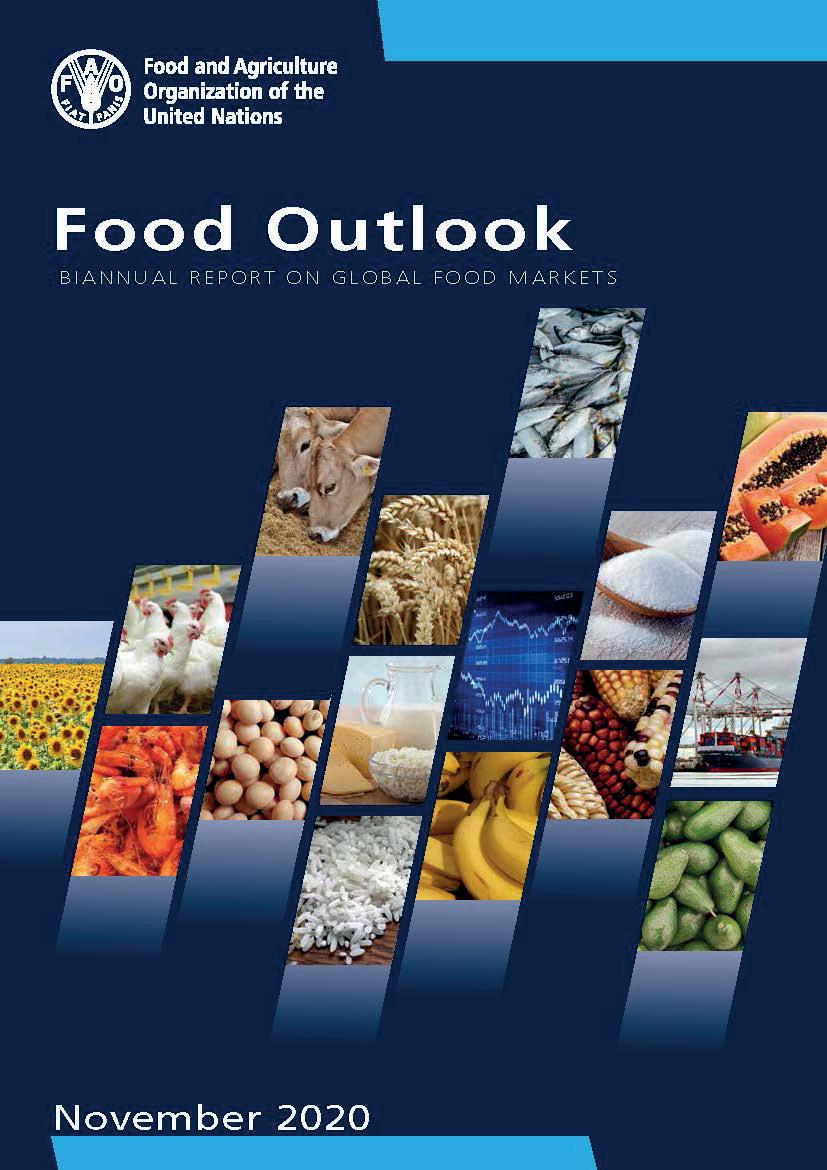
7 minute read
Food and nutrition
from News 1/2021
by CIHEAM-Bari
LibraryNewsletter OrganicAgriculture Newsletter Economic Books Fisheries Agriculture Food and nutrition Aquaculture Natural resourcesMAIBDocumentation Center Documentation Center Mediterranean Agronomic Institue of Bari News DOCUMENTATION CENTRE - CIHEAM BARI from the Library
FAO Repository Lirary reviews:
Advertisement
FOOD AND NUTRITION
and the Pacific.
Asia and the Pacific Regional Overview of Food Security and Nutrition. Maternal and child diets at the heart of improving nutrition
Type of publication: Book Author: FAO, UNICEF, WFP, WHO Publisher: FAO Year of publications: 2021 Place of publication: Bangkok, Thailand Other Entities Involved: UNICEF, WFP, WHO Pages: 120 p. By Country/Territory:Asia; Oceania Serial Title: Regional Overview of Food Security and Nutrition, Asia and the Pacific ; 2020 ISBN: 978-92-5-133853-7 doi: https://doi.org/10.4060/cb2895en
Agrovoc: household food security; maternal and child health; infant feeding; nutritional requirements; nutrition security; nutrition statistics;Asia
Abstract: The 2020 report on the State of Food Security and Nutrition in the Asia and Pacific region, provides an update on progress towards the 2030 targets (SDGs and WHA) at the regional and country level. Selected indicators look at undernourishment, food insecurity, childhood stunting, wasting and overweight, adult overweight, child minimum acceptable diet, exclusive and continued breastfeeding, and anaemia in women and children. While the region continues to work towards ending all forms of malnutrition and achieving Zero Hunger, progress on food security and nutrition has slowed, and the Asia and Pacific region is not on track to achieving 2030 targets. About 350.6 million people in the Asia and Pacific region are estimated to have been undernourished in 2019, about 51 percent of the global total. An estimated 74.5 million children under five years of age were stunted and a total of 31.5 million were wasted in the Asia and Pacific region. The majority of these children in the region live in Southern Asia with 55.9 million stunted and 25.2 million wasted children. Estimates predict a 14.3 percent increase in the prevalence of moderate or severe wasting among children under 5 years of age, equal to an additional 6.7 million children, due to the COVID-19 pandemic. With basic food prices and disposable incomes influencing household decisions on food and dietary intake, they are critical to improve food security and nutrition in the region. However, in the Asia and Pacific region, 1.9 billion people are unable to afford a healthy diet, driven by high prices of fruits, vegetables and dairy products, making it impossible for the poor to achieve healthy diets. In Part 2, the 2020 report promotes a systems approach to healthy maternal and child diets, involving and coordinating institutions and actors in the Food, Water and Sanitation, Health, Social Protection and Education systems, to collectively create the enabling environment for healthy diets. Integration of healthy diets and nutrition-focused Social Behavior Change Communication (SBCC) mainstreamed throughout these systems will lead to greater uptake and sustainability of healthy behaviours and caregiver’s knowledge.
Download the full report
Cite this publication as: FAO, UNICEF, WFP and WHO. 2021. Asia and the Pacific Regional Overview of Food Security and Nutrition 2020: Maternal and child diets at the heart of improving nutrition. Bangkok, FAO.
LibraryNewsletter OrganicAgriculture Newsletter Economic Books Fisheries Agriculture Food and nutrition Aquaculture Natural resourcesMAIBDocumentation Center Documentation Center Mediterranean Agronomic Institue of Bari N° 1 - 2021 - January-Februarywww.iamb.it
Fruit and vegetables - your dietary essentials. The International Year of Fruits and Vegetables, 2021, background paper.
Type of publication: Book Author: FAO Publisher: FAO Year of publications: 2020 Place of publication: Rome, Italy Pages: 82 p. ISBN: 978-92-5-133709-7
Agrovoc: fruits; vegetables; nutrition; awareness raising; food policies; good practices; dietary guidelines
Abstract: The International Year of Fruits and Vegetables 2021 (IYFV), as declared by the UN General Assembly in Resolution A/RES/74/244, aims at raising awareness of, directing policy attention to, and sharing good practices on the nutritional and health benefits of fruit and vegetable consumption, the contribution of fruit and vegetable consumption to the promotion of diversified, balanced and healthy diets and lifestyles, and reducing loss and waste of fruits and vegetables. This background paper outlines the benefits of fruit and vegetable consumption, but also examines the various aspects of the fruit and vegetable sector from a food systems approach: from sustainable production and trade to loss and waste management. This paper provides an overview of the sector and a framework and a starting point for discussion for the Year, highlighting the interlinkages of stakeholders and key issues to be considered for action during the IYFV.

Download publication
Cite this content as: FAO. 2020. Fruit and vegetables - your dietary essentials. The International Year of Fruits and Vegetables, 2021, background paper. Rome.
back to index
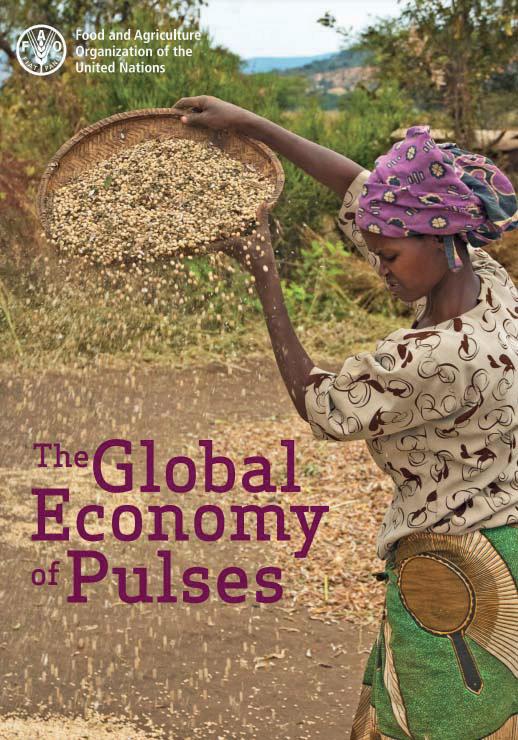
The Global Economy of Pulses
Type of publication: Book Year of publications: 2019 Author: Rawal, V. & Navarro, D. K., (eds) Publisher: FAO Pages: 190 p. Place of publication: Rome, Italy Other Entities Involved: Society for Social and Economic Research/Tulika Books ISBN: 978-92-5-109730-4 doi: https://doi.org/10.4060/I7108EN
Agrovoc: grain legumes; crop production; varieties; chickpeas; Phaseolus; lentils; consumption; nutritive value; health foods; supply chains; markets; agricultural research; public investment
Abstract: The production, trade and consumption of pulses have seen substantial growth over the last fifteen years. This report examines the trends and patterns of this growth, and the factors that explain these for different kinds of pulses. The report presents an analysis of trends of consumption of pulses in different regions of the world and discusses the role that pulses can play in human nutrition. The report presents an analysis of the dynamics of growth of major pulses in different pulse-producing countries of the world. It describes the increasingly important role of trade in the global economy of pulses and presents an analysis of changing patterns of trade. The report argues that there is a pressing need to close the large gap between potential and actual yields, particularly on smallholder farms in South Asia and sub-Saharan Africa, by increased adoption of improved varieties and modern agronomic practices in all developing countries. This in turn requires a major thrust in agricultural research
LibraryNewsletter OrganicAgriculture Newsletter Economic Books Fisheries Agriculture Food and nutrition Aquaculture Natural resourcesMAIBDocumentation Center Documentation Center Mediterranean Agronomic Institue of Bari News DOCUMENTATION CENTRE - CIHEAM BARI from the Library
and extension, improving credit availability, and public investment directed at pulse production. The report discusses future prospects and policy imperatives for sustaining the growth of pulse production.
Download publication
Cite this content as: Rawal, V. & Navarro, D. K., eds. 2019. The Global Economy of Pulses. Rome, FAO.
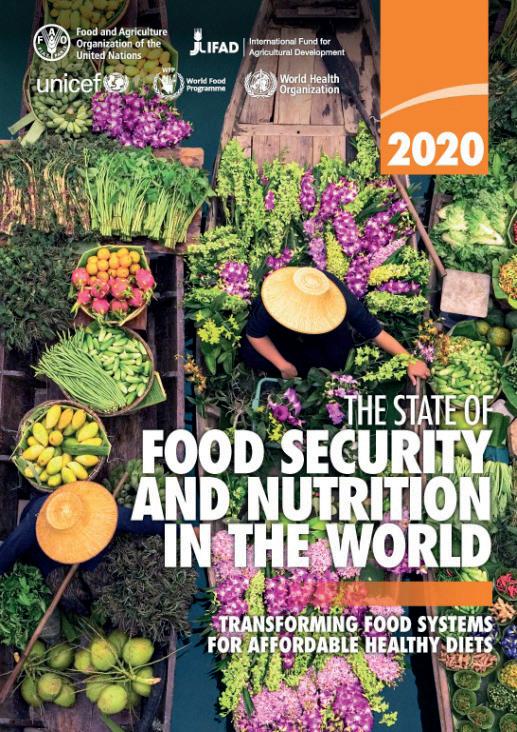
The State of Food Security and Nutrition in the World 2020. Transforming food systems for affordable healthy diets
Type of publication: Book Author: FAO, IFAD, UNICEF, WFP and WHO Other Entities Involved: WHO, IFAD, WFP, UNICEF Year of publications: 2020 Place of publication: Rome, Italy Pages: #320 p. ISBN: 978-92-5-132901-6 Serial Title: The State of Food Security and Nutrition in the World (SOFI) ; 2020 Publisher: FAO, IFAD, UNICEF, WFP and WHO doi: https://doi.org/10.4060/ca9692en
Agrovoc: food security; human nutrition; diet; food access; food systems; nutrition policies; cost analysis; methodology; statistical data
Abstract: Updates for many countries have made it possible to estimate hunger in the world with greater accuracy this year. In particular, newly accessible data enabled the revision of the entire series of undernourishment estimates for China back to 2000, resulting in a substantial downward shift of the series of the number of undernourished in the world. Nevertheless, the revision confirms the trend reported in past editions: the number of people affected by hunger globally has been slowly on the rise since 2014. The report also shows that the burden of malnutrition in all its forms continues to be a challenge. There has been some progress for child stunting, low birthweight and exclusive breastfeeding, but at a pace that is still too slow. Childhood overweight is not improving and adult obesity is on the rise in all regions. The report complements the usual assessment of food security and nutrition with projections of what the world may look like in 2030, if trends of the last decade continue. Projections show that the world is not on track to achieve Zero Hunger by 2030 and, despite some progress, most indicators are also not on track to meet global nutrition targets. The food security and nutritional status of the most vulnerable population groups is likely to deteriorate further due to the health and socio economic impacts of the COVID-19 pandemic. The report puts a spotlight on diet quality as a critical link between food security and nutrition. Meeting SDG 2 targets will only be possible if people have enough food to eat and if what they are eating is nutritious and affordable. The report also introduces new analysis of the cost and affordability of healthy diets around the world, by region and in different development contexts. It presents valuations of the health and climate-change costs associated with current food consumption patterns, as well as the potential cost savings if food consumption patterns were to shift towards healthy diets that include sustainability considerations. The report then concludes with a discussion of the policies and strategies to transform food systems to ensure affordable healthy diets, as part of the required efforts to end both hunger and all forms of malnutrition.
Download publication
Cite this content as: FAO, IFAD, UNICEF, WFP and WHO. 2020. The State of Food Security and Nutrition in the World 2020. Transforming food systems for affordable healthy diets. Rome, FAO.

